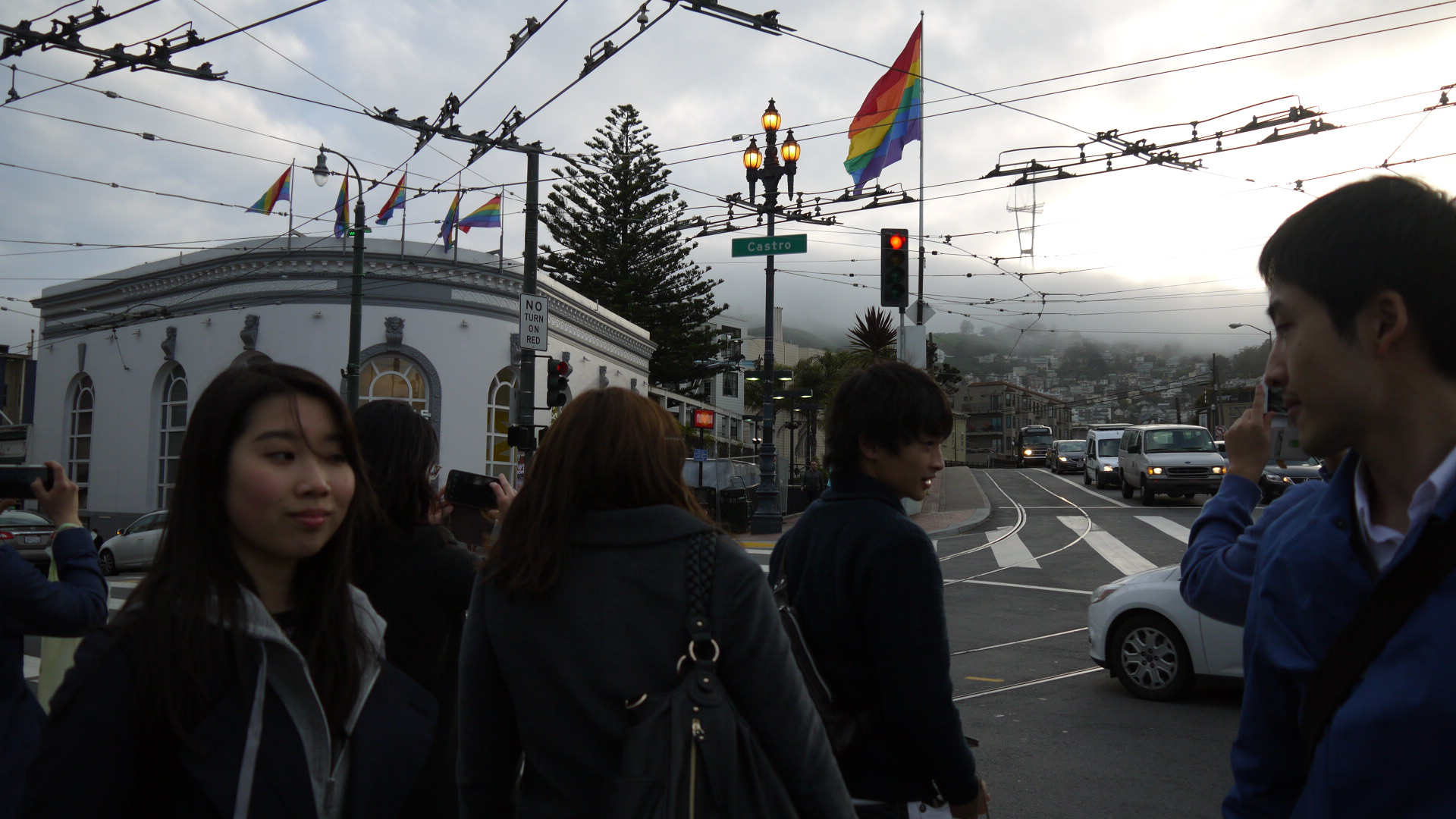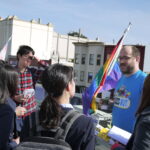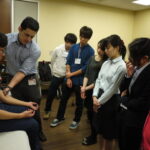Strut Clinic Visit
I am Erika Shimizu, a CME participant from Tokyo Women’s Medical University. In San Francisco, I am right in the middle of the wonderful days.
On March 2nd we visited Strut which is the clinic for gay, bi and trans men. Although there is a high need of special health care for gay men because of doctors’ heterosexism, Strut is the only one clinic for them in the U.S. Strut is a program of San Francisco AIDS Foundation and is in Castro (which is the district for sexual minorities, I think Yushi mentioned in the previous post). To be precise, they are more than just a clinic. Of course they provide health care services such as screening of HIV and STI, vaccination of hepatitis, education of substance use, tools for safer sex, counseling and so on, but they also let patients connect to a community. For example, they have some groups which enable members to help one another. One of those groups is “Positive Force” which is the group of HIV positive people. Having seen the posters on the wall, we could see many HIV positive people smiling. Atsuhiko said those pictures surprised him so much because they looked so happy against the bad image of HIV, and I was too. Through seeing those pictures, I realized again “being healthy” is not the same to “being happy”.
Moreover, these services are free from payment. Pal said she was so surprised when she heard that. In the CME program, I learned there are many public health care systems for different kind of minorities in San Francisco. Of course it may be because of diversity in San Francisco, but I wonder why Japan doesn’t have any although Japan has many minorities. I think Japan should have those systems and show minorities we are acceptive.
One of the most impressive things is that they are so open to sexual activities. On the contrary, Japanese hesitate to talk about them especially in public. For gay men, sexual activities are strongly connected with their health. It may be difficult to be open for Japanese, so I think we have to think about how doctors can let the patients talk about their sexual activities without feeling uncomfortable.
I felt that Strut is both acceptive and protective for patients. They provide health with patients but they don’t put limitations on their love. I was deeply moved by that and I think that is the only true way to accept diversity.

Castro District Tour
Hello I`m Yushi Matsuda from Nihon University. I decided to participate in CME program as I am interested in organ donation in the U.S.
On March 2nd, we visited the town of Castro where LGBT is widely accepted. The symbol of LGBT admittance is the color of rainbow and I found many shops in Castro displaying rainbow-colored flags. The most striking building among them was glass-windowed Strut Clinic. It was very bright in the clinic as if I was in a high-end cafe, however there were many things for gays, for example, many pictures for gays painted by candies. It showed us that LGBT is not uncommon at all. There, you can have HIV examination for free and consult with doctors if the result turns out positive.
Two things surprised me heavily today: one is a picture of HIV patients and the other is the way people deal with LGBT. When we visited Strut Clinic, I found some pictures of those who had HIV, all laughing heartily. They seemed very happy in those pictures. I was very surprised because I had been imagining that HIV patients were always depressed. There were a big difference between what I have been thinking and reality. The other thing which surprised me was how to deal with LGBT at Castro. Unfortunately Japan still does not have efficient systems to accept LGBT, especially gays like in America, due mostly to that Japanese are said to be monolithic society and it is sometimes hard for people to accept diversity. So, I think that it is important for Japanese to assume that there are many kinds of people who have different ideas and beliefs.


Stanford 25
Hello, my name is Atsuhiko Ochi. I major in medicine at Chiba University. I am a first year medical student. Now, I will introduce you what we did or learned about in this activity. Firstly, we were taken the lecture of Dr. Ozdalga, who major in diabetes. She taught us what diabetes are. In Japan as well as in America, the number of patients who suffer from this disease is increasing at steady pace, and so I think you have had some opportunity to learn about or know deeply it by the news broadcasted on TV, and so on.
In this lecture, we learned more technical things than things you can get by watching TV, or the Internet. Especially, I found it very interesting how to judge whether a patient suffer from diabetes. For example, the cause of it is mainly excessive intake of sugar, and because this changes some chemical reactions, patient’s skin becomes dark, or thick. In addition to it, his nail sometimes also becomes yellow. These changes are main symptoms of diabetes.
In the lecture, we learned about, and actually practiced how to diagnose someone with diabetes. The foot of patient of diabetes is usually a little different condition from that of normal people, and doctors look the difference. We studied some of the ways in which we examine such a difference.

Secondly, we were given the lecture of reflex by Dr. Oaratanti. Talking of reflex, even if you don’t study medicine deeply, you might know some examples of it. For example, in Japanese, 膝蓋腱反射 In this lecture, we learned several kinds of reflex by actually doing medical examination about reflex. The doctor was so interesting and friendly that I had a good time although this was a lecture to some extent.
This experience encouraged me to study medicine after coming back to Japan!!











